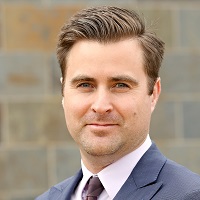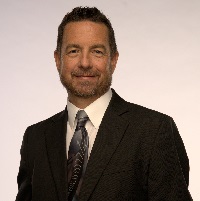How 3 hospitals developed COVID-19 vaccine programs to suit their unique needs amid questions about costs and supplies
- With no best practices to use as a model, each hospital has had to develop a COVID-19 vaccine program tailored to its own situation.
- Some hospitals are charging for vaccine administration.
- Communication has been key to a successful rollout.
As healthcare stakeholders from the federal government on down scramble to implement a mass vaccination program, hospitals are working to fulfill their role in the process of getting the COVID-19 vaccine into people’s arms.
Yet the recent experiences of three hospitals show that the specifics of vaccine programs can vary significantly at the ground level, reflecting each organization’s unique assets and characteristics.
Planning for facility and staffing logistics
Three Rivers Hospital in Brewster, Washington, a critical access hospital serving the 15,000 residents of a large rural hospital district, converted its hospital lobby to a vaccine-administration center for the initial phase of its vaccine program. Vaccinations eventually may move to the hospital’s outpatient clinic, said Jennifer Best, the hospital’s business development coordinator.
Nurses and administrative staff are being redeployed from their regular positions to handle vaccine administration. “We’re not really in a position financially to be able to bolster our staff,” she said. “So we are using the people we have — from admitting, to the business office, to nursing to our surgery team — and they are an excellent team.”

Jennifer Best is business development coordinator with Three Rivers Hospital in Brewster, Wash.
University Health System, a county-owned hospital in San Antonio, is using space in a centrally located shopping mall for its community-wide vaccine program.
While the hospital and an outpatient clinic were adequate sites for vaccinating the health system’s employees and first responders, the Wonderland of the Americas mall site offers the space needed to move hundreds of people through the vaccination process each day while maintaining social-distancing protocols, said Bill Phillips, senior vice president and chief information officer for the 700-bed teaching health system.
“Most ambulatory clinics don’t have that flexibility,” he said. “And you don’t want all that traffic inside your hospital either.”
The mall clinic was originally staffed by 60 clinical and administrative employees who were shifted from their regular duties. After the second week, Phillips started hiring temporary employees and exploring the use of volunteers.
“We have so many people — retired RNs and LPNs, medical assistants — that want to come to help,” he said. “We’re starting to build a list of those folks and see how we can best use them.”
Adventist Health, a 100-bed system in California’s Mendocino County, includes three hospitals, two of which are designated as critical access, and 23 clinics serving a population of about 120,000 people.
Judson Howe, president of the system, said a decentralized approach — several small clinics with about six stations each — allows for crowd management. “The last thing you want to do is turn your vaccination event into a super-spreader event,” he said.
As of late January, Adventist had held six mass-vaccination events across the communities it serves. “We have found a template that works and are one of the few counties in California that are already vaccinating the general public,” Howe said.
Getting a handle on costs
The costs of administering a mass vaccination program won’t be well understood until health systems get more experience. In Howe’s view, the considerable expense needed to sustain such a program is outweighed by the opportunity to keep people healthy. In his health system, the program also is likely to be cost-effective since about 35% of Adventist Health’s patients are covered by capitated arrangements.
“Vaccinations are a powerful public health tool that we have at our disposal that will reduce patients’ need for our inpatient services,” he said.

Judson Howe is president of Adventist Health based in Roseville, Calif.
The vaccine itself is available to individuals at no cost, but provider organizations are allowed to charge for administration. Three Rivers Hospital, one of many rural hospitals that were experiencing severe financial distress before the pandemic, is charging an administration fee of $22 for the first dose and $30 for the second dose to help cover staff costs associated with planning and executing the vaccine program, Best said. The hospital’s business office helps arrange insurance coverage when possible.
The cost of administering vaccines was among the reasons the American Hospital Association wrote a letter to Congress in late January requesting additional funding for hospitals.
“We urge Congress to provide additional funds to the Provider Relief Fund and for vaccine distribution and administration, which will allow for continued support of hospitals’ COVID-19-related lost revenues, as well as additional expenses incurred due to purchasing supplies and equipment, staffing, establishing emergency testing and vaccination centers and constructing and retrofitting facilities,” wrote Thomas P. Nickels, AHA executive vice president.
Figuring out supply chain requirements
Hospital leaders have had to organize their vaccine programs without optimal communication and support from government agencies.
“The state sends shipments once per week, but we often don’t know how much we’re getting until a couple days before the next shipment arrives,” Best, the Three Rivers leader, said. “I think the Washington State Department of Health is still working on streamlining their own communication processes in that regard.”
For Adventist Health, the biggest challenge is supplies such as syringes and needles. “Our team is eager and ready to do more, but we have used up our supplies at this time and are waiting to receive more,” Howe said. “It makes it challenging to plan more events and be more organized when we have no reassurance of having the supplies we need.”
Establishing a communications strategy and infrastructure
Three Rivers is using local media and social media to notify people that they can register for vaccination on the hospital’s website. “We ask people to fill out the registration form online and then we call them within 24 hours of receiving their completed form to schedule their first appointment,” Best said. “We are hoping that will cut down on the number of phone calls that we’ve been receiving.”
University Health also wants people to register, either online or via mobile app, but Phillips knows the call volume will be heavy for the foreseeable future. “Many people do not have access to a computer or cell phone,” he said. “So make sure you have a large phone bank that can handle the calls.”

Bill Phillips is senior vice president and CIO with University Health System in San Antonio.
When University Health gets additional batches of vaccine, it sends an email to everyone who subscribes to the system’s newsletter and a push notification via its mobile app. In those communications, as well as on its website, eligibility criteria are prominently displayed.
Leaning in on relationships
When an Adventist Health freezer failed on Jan. 4, Howe and his colleagues realized that hundreds of doses would become unusable if they were not administered within a few hours. He immediately called the county health department, which quickly decided that the vaccine could be given on a first-come, first-served basis without regard to the state’s designated eligibility tiers.
The health system gave 200 doses to the county to administer through its channels and dispatched its own nurses to skilled nursing facilities to administer shots. It provided vaccines for the local Federally Qualified Health Center to vaccinate its employees. And three separate clinics were set up on the Adventist Health campus.
The hospital used its mass-texting capacity, developed to communicate about wildfire crises, to inform staff and physicians about fast-breaking events. “We had three messages: ‘Please come to help if you can volunteer. Two, if you want your vaccine and you haven’t had it, come in now. And three, spread the word,’” Howe said.
Before time ran out, all 830 doses that had been stored in the freezer were administered. Howe attributes the success to good working relationships with the county health department and other leaders who responded immediately to his calls.
Expecting the unexpected
University Health requires appointments for vaccinations, but many people arrive hoping for walk-in access. Phillips assigns “ambassadors” to greet people as they arrive, ask whether they have an appointment and, if they do not, educate them about how to make one. Ambassadors also support the various needs of vaccine seekers, many of whom in the early groups of recipients are elderly and infirm.
“We have wheelchairs and stretchers ready,” Phillips said. “We actually push patients if necessary. This is a sick population, so expect that they will need a lot of help.”





